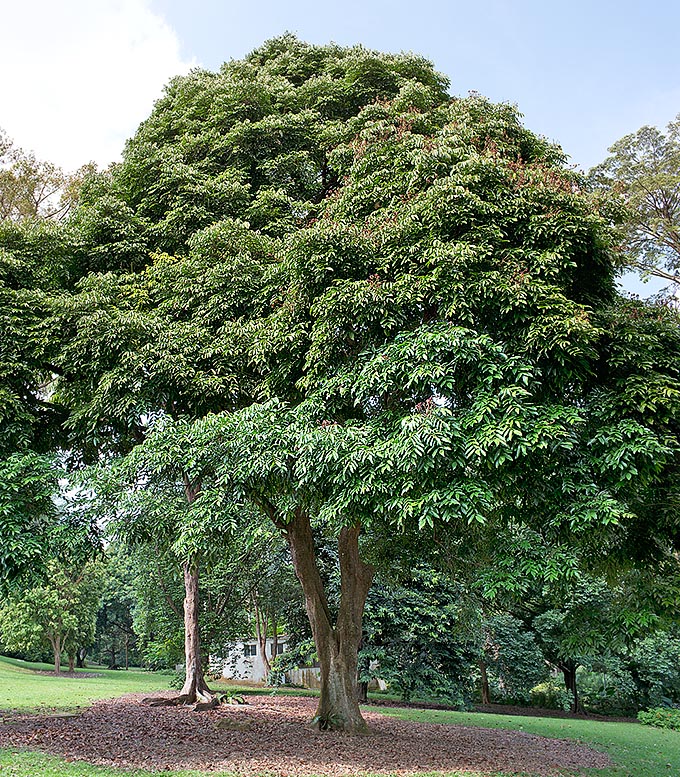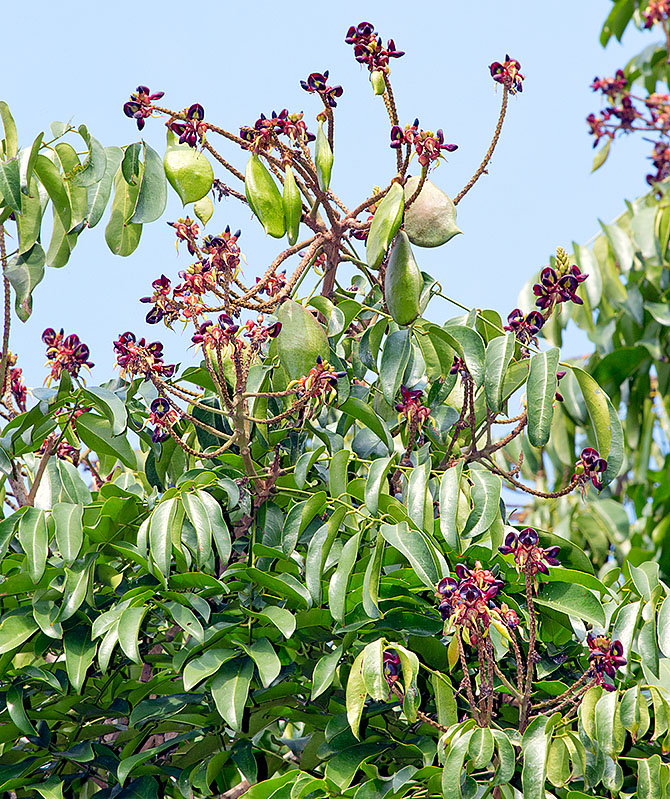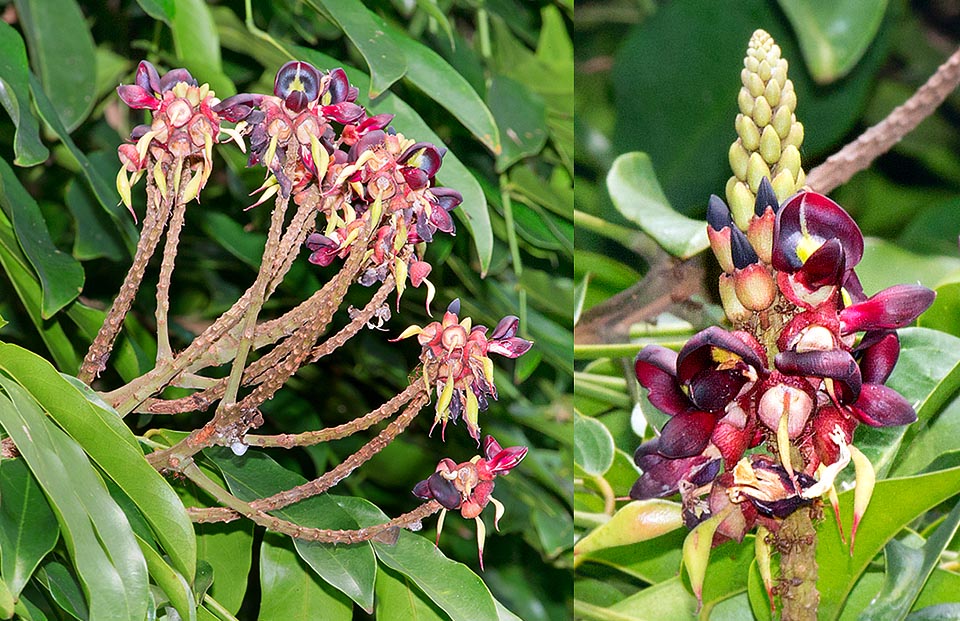Family : Fabaceae

Text © Pietro Puccio

English translation by Mario Beltramini

Callerya atropurpurea is a South-East Asian tree reaching 15 m of height with compact foliage © Giuseppe Mazza
The species is native to Burma, Cambodia, Indonesia, Java, Laos, Myanmar, Peninsular Malaysia, Singapore, Sumatra, Thailand and Vietnam where is diffudsed in the evergreen tropical forests from the sea level up to about 1200 m of altitude.
The genus is honoured to the Italian-French missionary and botanist Giuseppe Callery (1810-1862); the specific name is the combination of the Latin adjectives “ater, atra, atrum” = dark, black and “purpureus, a, um” = purplish, with reference to the colour of the flowers.
Common names: danyinnie, kwe tanyin (Burmese); chica, girah payah, jenerik, merbong, tulang daing (Malaysian); kayu ujau, meribugnan (Sumatran); kasae, yee-ni-keh (Thai); mát tím sẫm, thàn mát tía (Vietnamese).
The Callerya atropurpurea (Wall.) Schot (1994) is an evergreen tree with compact crown up to 35 m tall with erect trunk, up to 45 cm of diameter, with greyish bark, smooth and thin.
The leaves are alternate, impari- pinnate, with 7-11 oblong-oval leaflets with entire margin and obtuse apex, 6-15 cm long and 2,5-5 cm broad, coriaceous, of glossy intense green colour.
The inflorescences are compact terminal panicles, 12-20 cm long, bearing numerous papilionaceous flowers, about 2 cm long, bisexual, of dark purple colour, with campanulate calyx 0,5 cm long, elliptic vexillum, about 1,3 cm long and 1 cm broad, wings and keel 1-1,4 cm long; the flowers emit a rather unpleasant odour.

It’s a leguminose, as it’s clear at once from the papilionaceous flowers shape and the growing fruits © G. Mazza
The fruits are ovate to elliptic legumes, dehiscent, 8-15 cm long and 4-6 cm broad, initially purple red, then brown when ripe, containing up to 3 lenticular seeds, of 3-4 cm of diameter and 2-2,5 cm thick, even if often there is present only one big sized seed, up to 7 cm of diameter.
It reproduces by seed in organic loam, with addition of sand or perlite per a 30% to improve the draining, maintained humid at the temperature od 24-26 °C, and by cutting.
Ornamental tree cultivable in the tropical and subtropical humid climate zones, as does not bear values of temperature close to 0 °C, if not exceptional and for very short time.
It is often utilized, in particular in South-East Asia, in parks and gardens as isolated specimen or in groups as shade tree, besides as road trees.
It requires an exposition in full sun and well drained soils, rich of organic substance to grow the best, even if in nature often grows up in poor soils, maintained almost constantly humid.
The initial growth is rather slow, then the speed increases, especially if helped with abundant irrigations, in the dry periods, and regular fertilizations.
The wood, of good quality and long lasting, is locally utilized in the civil constructions, for frames, walls and floors, for boats, furniture, cases and handicrafts. Seeds and roots are poisonous due to the presence of cyanogenetic glycosides, branches and roots contain also rotenone, a broad-spectrum insecticide.

Often shades tropical gardens and roads. Compact 10-12 cm terminal panicles with numerous about 2 cm bisexual flowers. Seed and roots are poisonous © G. Mazza
→ To appreciate the biodiversity within the family of FABACEAE please click here.
